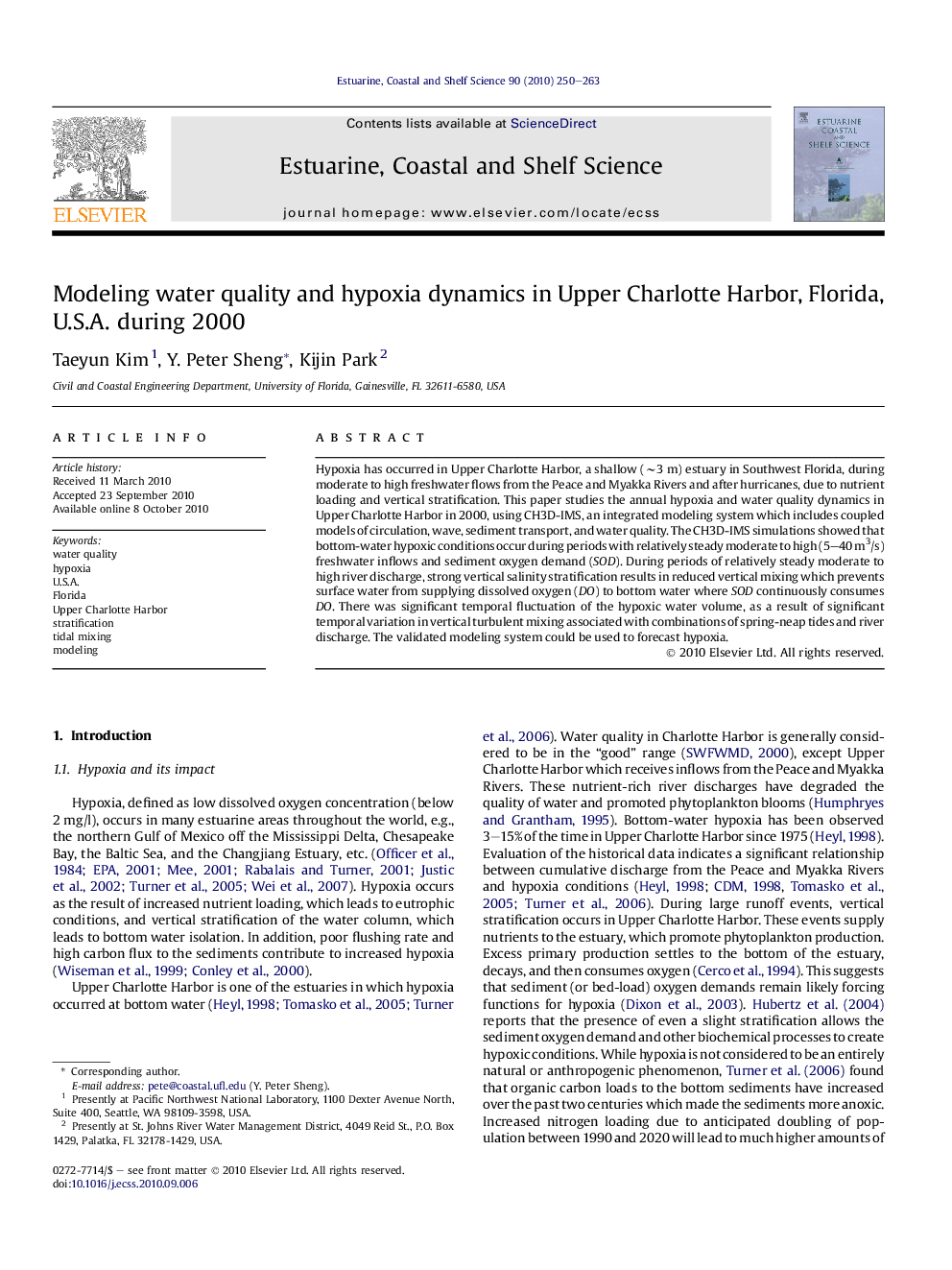| Article ID | Journal | Published Year | Pages | File Type |
|---|---|---|---|---|
| 4540651 | Estuarine, Coastal and Shelf Science | 2010 | 14 Pages |
Hypoxia has occurred in Upper Charlotte Harbor, a shallow (∼3 m) estuary in Southwest Florida, during moderate to high freshwater flows from the Peace and Myakka Rivers and after hurricanes, due to nutrient loading and vertical stratification. This paper studies the annual hypoxia and water quality dynamics in Upper Charlotte Harbor in 2000, using CH3D-IMS, an integrated modeling system which includes coupled models of circulation, wave, sediment transport, and water quality. The CH3D-IMS simulations showed that bottom-water hypoxic conditions occur during periods with relatively steady moderate to high (5–40 m3/s) freshwater inflows and sediment oxygen demand (SOD). During periods of relatively steady moderate to high river discharge, strong vertical salinity stratification results in reduced vertical mixing which prevents surface water from supplying dissolved oxygen (DO) to bottom water where SOD continuously consumes DO. There was significant temporal fluctuation of the hypoxic water volume, as a result of significant temporal variation in vertical turbulent mixing associated with combinations of spring-neap tides and river discharge. The validated modeling system could be used to forecast hypoxia.
Research highlights► Hypoxia in shallow estuary occurs during steady river flows and low winds in summer. ► Hypoxia forms when vertical mixing due to tide, wind, and river is low and SOD is high. ► Hypoxia water volume changes substantially due to changes in tides and river flows. ► CH3D-IMS simulated the hypoxia and water quality dynamics in Charlotte Harbor, FL.
